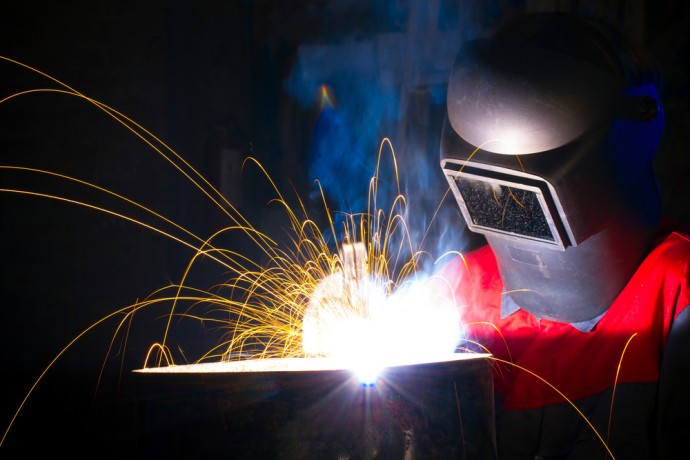By Robert Barlow
Welding is a pretty complicated and difficult pastime to take up and without an understanding of the nature of welding power and voltage things can get confusing pretty quickly. As a welder you’ll need an in depth understanding of what is required, and this is a good place to start. Here’s a basic rundown of the things you need to know about welding power supplies.

Definitions
A welding power supply is a device that provides an electric current with which to perform welding. These can range from the high current 80 amperes to the insanely high 12000 amperes, although this is mainly for spot welding. They can also be lower voltage for tungsten arc welding and the like. A welding power supply can range from something as simple as a car battery to the complicated machine based on silicon controlled rectifier technology. There are a broad range that can be broken down into constant current or constant voltage. A constant current machine varies its voltage to maintain a steady current while a constant voltage with change current for the sake of voltage.
Designs
The designs can be broken down into three different types, transformer, generator and alternator and inverter.
Transformer
A transformer style power supply converts the high voltage and low current from a utility main into a high current low voltage. These can alternate between 17 to 45 volts and 55 to 590 amps. A rectifier can also do this for more expensive designs. The advantage of this is the ability for the welder to select the output current by moving a primary winding closer to or farther from a secondary winding. Transformer designs are typically the least expensive but they can also be bulky and clunky to use. They operate at the frequency of 50 to 60 Hz. This low frequency must have a high magnetizing inductance to avoid wasteful shunt currents.
Generator and alternator
Welding power supplies also use generators or alternators. These are designs driven by an internal combustion engine and used to convert mechanical energy into electrical energy. The output of the generator can be a direct current, or even a higher frequency ac current which means these machines can produce direct current from alternated current without the need for rectifiers.
Inverter
It is now possible to build a switched-mode power supply capable of coping with high loads of arc welding. These designs are known as inverter welding units. They generally rectify the utility AC power to DC then invert DC power into a transformer to produce the desired voltage. This requires some sophisticated technology but it does reduce the bulk of the transformer. The inverter circuitry can provide features such as power control and overload protection. They are generally more efficient and provide better control.
This is only the basic information on the different types and varieties of welding power supply. For more information or explanations of the terms here visit http://www.welding.com.au

